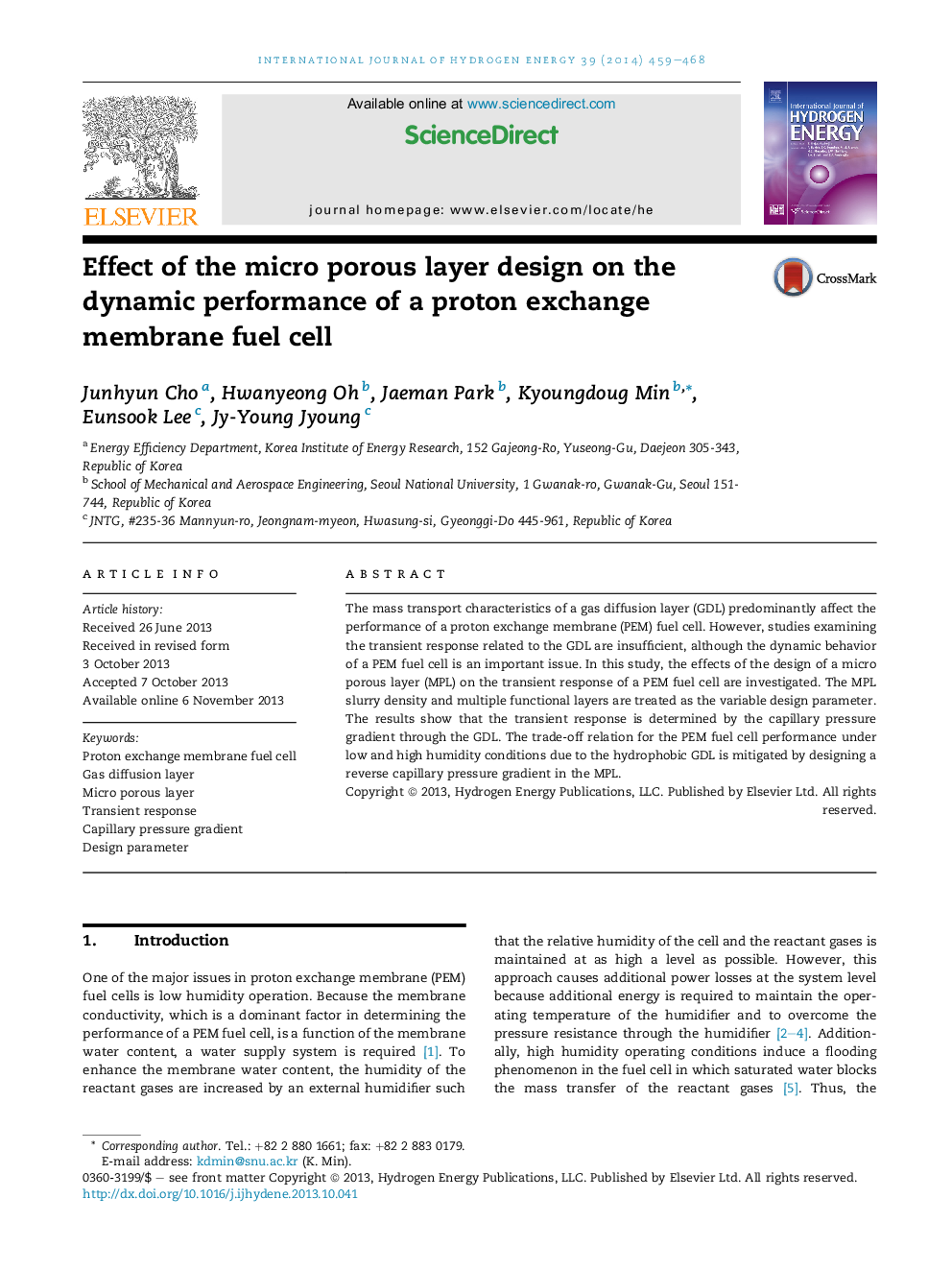| Article ID | Journal | Published Year | Pages | File Type |
|---|---|---|---|---|
| 1273960 | International Journal of Hydrogen Energy | 2014 | 10 Pages |
•The capillary pressure gradient of a GDL affected the transient response of a PEMFC.•The dense MPL performed best at high humidity conditions.•The reverse capillary pressure gradient in the MPL performed best at low humidity.•The addition of less hydrophobic MPL exhibited better performance at low humidity.
The mass transport characteristics of a gas diffusion layer (GDL) predominantly affect the performance of a proton exchange membrane (PEM) fuel cell. However, studies examining the transient response related to the GDL are insufficient, although the dynamic behavior of a PEM fuel cell is an important issue. In this study, the effects of the design of a micro porous layer (MPL) on the transient response of a PEM fuel cell are investigated. The MPL slurry density and multiple functional layers are treated as the variable design parameter. The results show that the transient response is determined by the capillary pressure gradient through the GDL. The trade-off relation for the PEM fuel cell performance under low and high humidity conditions due to the hydrophobic GDL is mitigated by designing a reverse capillary pressure gradient in the MPL.
